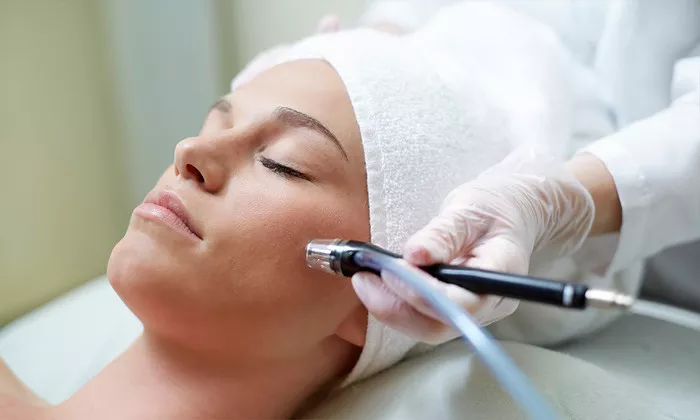Microdermabrasion has gained popularity as a non-invasive cosmetic procedure that aims to improve the appearance of the skin. One common concern that individuals seek to address with microdermabrasion is wrinkles. But does this procedure truly help reduce the appearance of wrinkles? In this article, we will explore the benefits and limitations of microdermabrasion in addressing wrinkles.
Understanding Microdermabrasion
Before delving into its effectiveness on wrinkles, let’s briefly understand what microdermabrasion entails. Microdermabrasion is a cosmetic procedure that uses a device to exfoliate and remove the outer layer of dead skin cells. It typically involves the use of fine crystals or a diamond-tipped wand to gently abrade the skin’s surface, followed by suction to remove the exfoliated particles.
The Mechanism of Action
Microdermabrasion works by stimulating cell turnover and promoting collagen production, which are crucial factors in maintaining youthful and smooth skin. By removing the outermost layer of dead skin cells, microdermabrasion helps reveal fresher, healthier skin beneath. The exfoliation process also improves blood circulation to the treated area, enhancing the delivery of nutrients and oxygen to the skin cells.
Benefits of Microdermabrasion for Wrinkles
Microdermabrasion can offer several benefits when it comes to addressing wrinkles:
1. Softening of Fine Lines: Microdermabrasion can help soften the appearance of fine lines and superficial wrinkles. By removing the outer layer of dead skin cells and stimulating collagen production, it can promote a smoother and more youthful-looking complexion.
2. Enhanced Skin Texture: The exfoliating action of microdermabrasion can improve skin texture, making it appear smoother and more even. This can help minimize the appearance of surface wrinkles and irregularities.
3. Improved Absorption of Skincare Products: By removing the dead skin cell barrier, microdermabrasion can enhance the absorption of topical skincare products. This allows the active ingredients in these products to penetrate more effectively, potentially boosting their effectiveness in targeting wrinkles and other signs of aging.
4. Mild Skin Tightening: Microdermabrasion can stimulate collagen production, which may lead to a mild tightening effect on the skin. This can help reduce the appearance of wrinkles, particularly in the early stages or in cases where the wrinkles are not deeply etched.
Limitations and Considerations
While microdermabrasion can offer benefits in addressing wrinkles, it is important to understand its limitations and consider the following factors:
1. Depth of Wrinkles: Microdermabrasion is most effective for fine lines and superficial wrinkles. Deeper wrinkles, such as those caused by significant sun damage or age-related changes, may require more invasive procedures or treatments that specifically target the deeper layers of the skin.
2. Number of Sessions: Achieving noticeable results with microdermabrasion typically requires multiple treatment sessions. While some improvement may be seen after the first session, a series of treatments spaced a few weeks apart is often recommended to maximize the benefits.
3. Maintenance and Longevity: Microdermabrasion is not a permanent solution for wrinkles. The results of the procedure are not long-lasting, and regular maintenance treatments may be needed to sustain the desired effect. The frequency of maintenance sessions will depend on individual factors and the recommendation of your skincare professional.
4. Individual Variations: The effectiveness of microdermabrasion can vary from person to person. Factors such as skin type, the severity of wrinkles, and overall skin health can influence the outcomes. It is important to consult with a qualified skincare professional who can assess your specific needs and provide personalized recommendations.
Combining Microdermabrasion with Other Treatments
To optimize the benefits of microdermabrasion in addressing wrinkles, it can be combined with other complementary treatments. These may include:
1. Chemical Peels: Chemical peels, when used in conjunction with microdermabrasion, can provide a more comprehensive exfoliation and may help target deeper wrinkles.
2. Topical Retinoids: Retinoids, known for their wrinkle-reducing properties, can be incorporated into your skincare routine after microdermabrasion. The exfoliated skin surface allows for better absorption of these products, enhancing their effectiveness.
3. Injectable Treatments: For more pronounced wrinkles, injectable treatments such as dermal fillers or botulinum toxin (Botox) may be considered in addition to microdermabrasion. These treatments can provide a more targeted and immediate reduction in the appearance of wrinkles.
Conclusion
Microdermabrasion can be a beneficial cosmetic procedure for addressing wrinkles, particularly fine lines and superficial wrinkles. By stimulating cell turnover, promoting collagen production, and improving skin texture, it can contribute to a more youthful and rejuvenated appearance. However, it is important to have realistic expectations and understand that microdermabrasion may not be suitable for deep wrinkles or severe signs of aging. Consulting with a qualified skincare professional is key to receiving personalized advice and determining the most appropriate treatment options for your specific needs.


